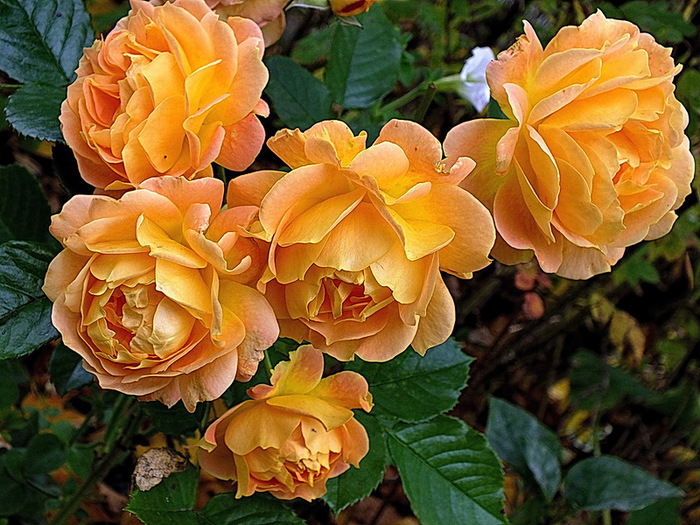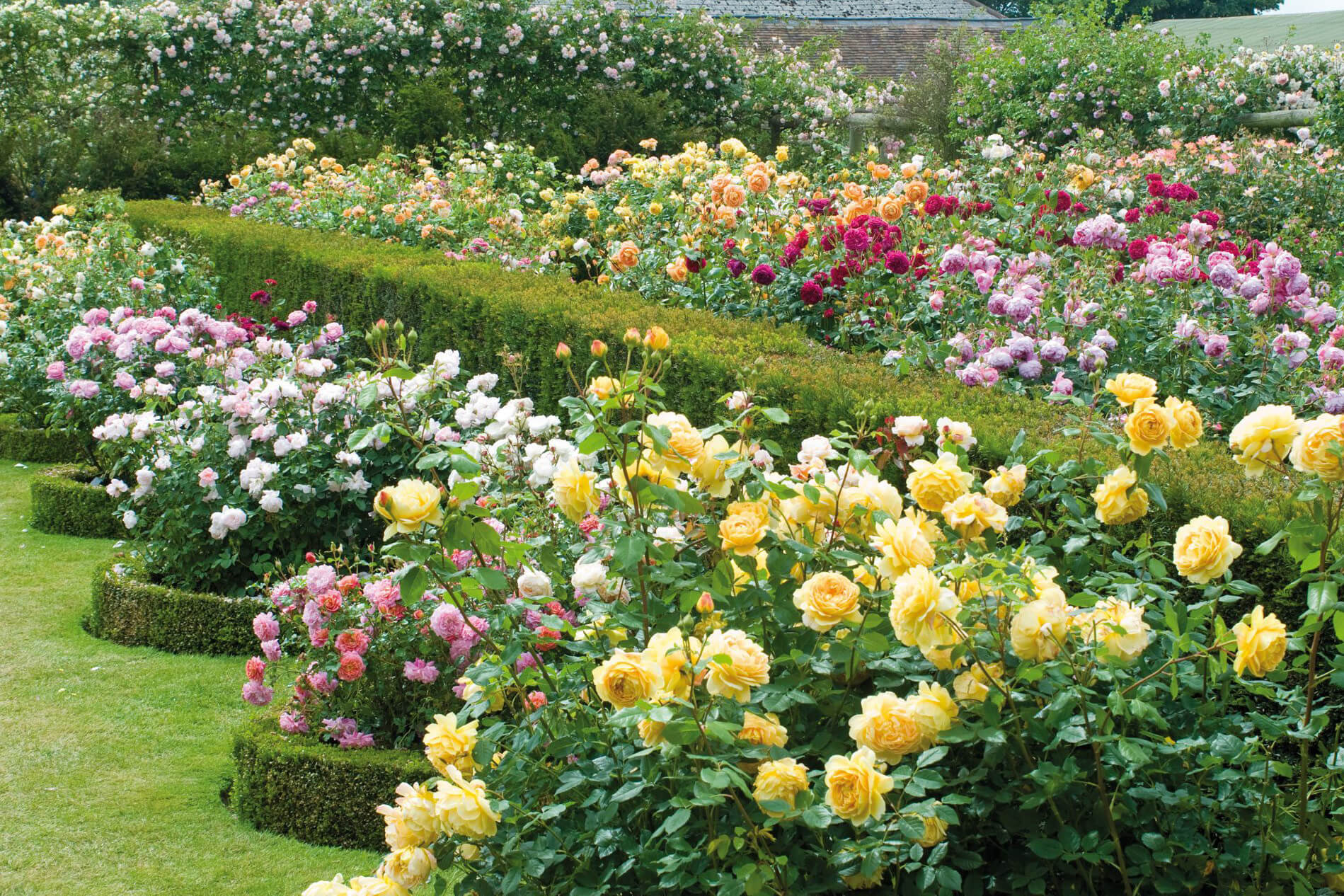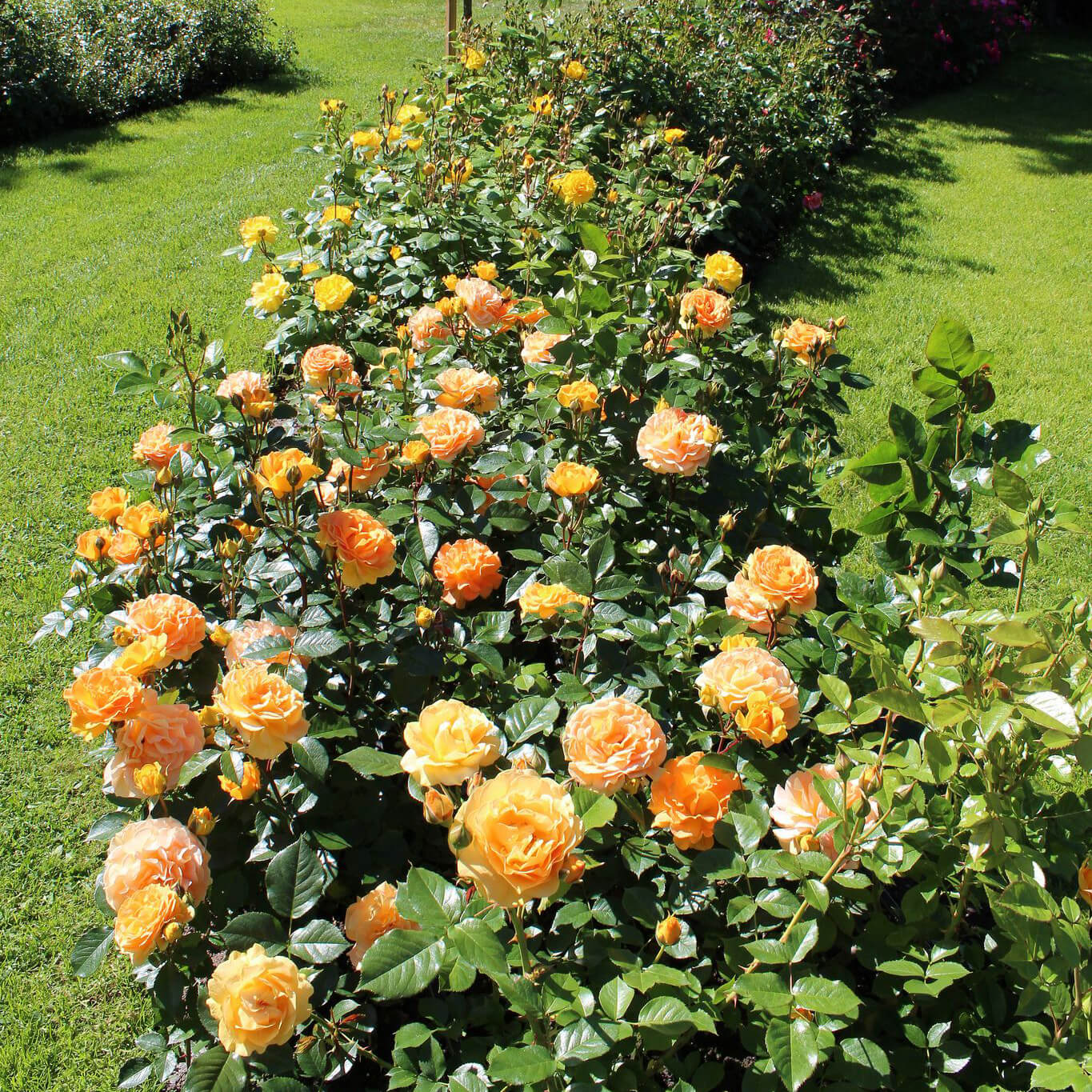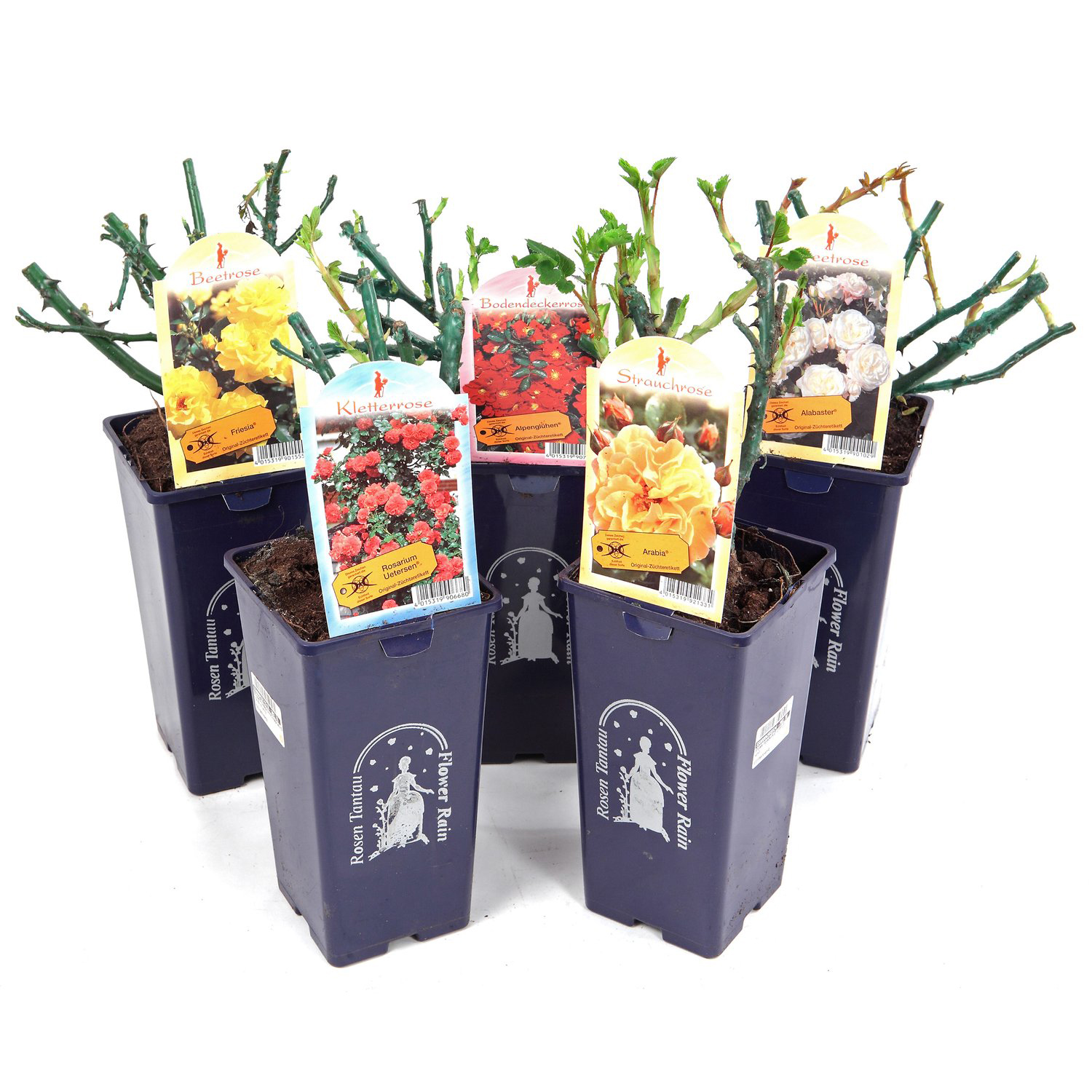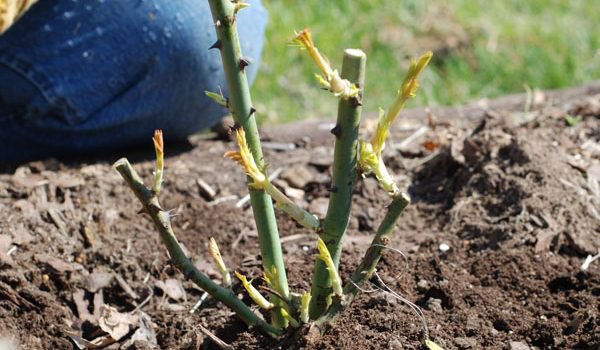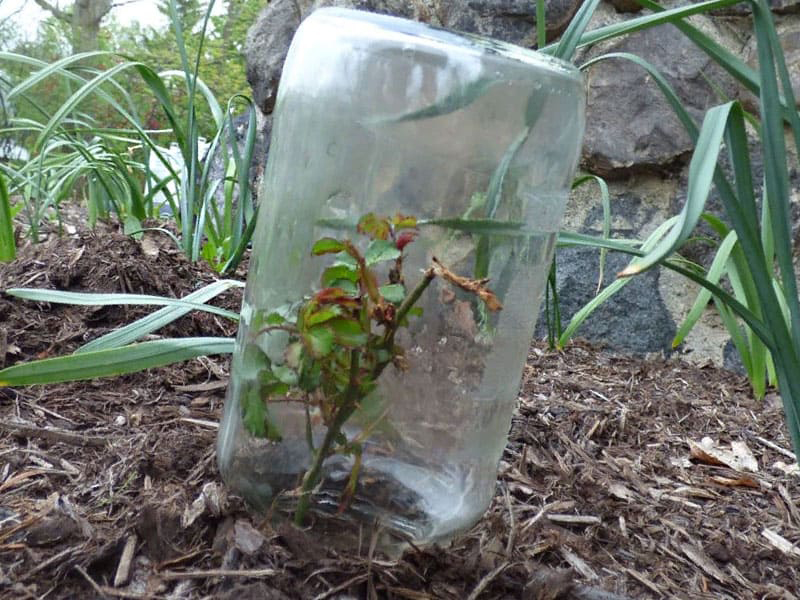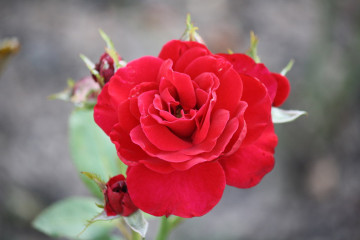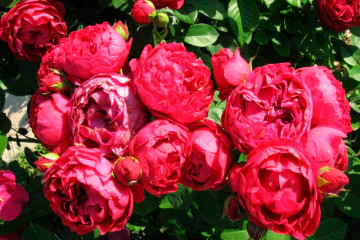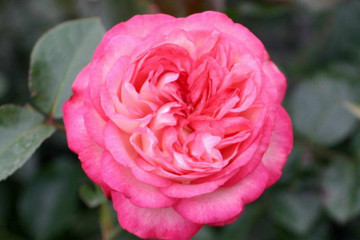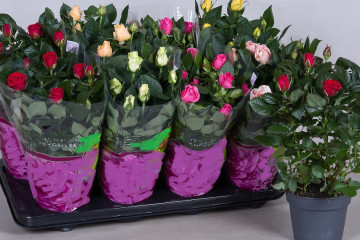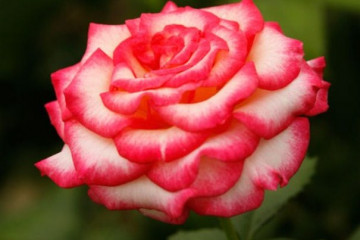Rose Goldelse - what kind of floribunda is it?
Content:
The rose can truly be called a universal flower. The huge variety of species allows the queen of flowers to be used for many purposes. Some species are great for container growing, many look great in group plantings, and curly ones can decorate the wall of any home. In addition, many roses are very easy to care for and disease resistant. One of these is the Goldelse rose.
Variety information
Golden Elsa belongs to the floribunda group of roses. The variety was bred in Germany in 1999 and is a hybrid of polyanthus, tea and musk roses.
This species belongs to continuous flowering. Flowering peaks in July. Lush orange flowers with a diameter of about 10 cm are collected in inflorescences of 4-5 pieces, have a strong floral aroma. The duration of one flowering period lasts about two weeks, after a while flowering begins again.
The bush is quite compact, the height does not exceed 70 cm. This allows you to grow this species in containers and flowerpots. In width it grows up to 60 cm in diameter.
Floribunda Goldels rose is very unpretentious both to soil and growing conditions. It tolerates even severe frosts well, but only if there is cover.
Advantages and disadvantages
Like every plant, Goldelsee has its pros and cons.
The pluses include the following qualities of this rose:
- unpretentious;
- disease resistant;
- withstands severe frosts;
- blooms profusely and for a long time;
- has a compact size;
- suitable for growing in containers.
Goldelsa has few drawbacks, but still they are:
- exactingness to watering;
- the need for shelter for the winter;
- slow growth.
Application in landscape design
The British are trendsetters in landscape design. And who, if not them, love roses in all their diversity. It is this flower that must be present in the flower garden of the British. Rose Goldels is perfect for an English-style flower bed.
The small size of this variety allows you to grow it in a flowerpot. A container with a flower will decorate the threshold of a house or a balcony of an apartment.
In group plantings, the Goldelze rose will look like a bright accent against the background of a green lawn.
Landing in open ground
Despite the fact that almost all types of roses do not require special care, some points should be considered when planting.
Saplings
First of all, you need to purchase seedlings of roses of this variety. For this, it is better to give preference to large stores or specialized garden centers. There will definitely not be a mistake with the variety and the likelihood of acquiring healthy seedlings is greater.
Time
You can plant a rose of the Goldlza variety in open ground both in spring and in autumn. For spring planting, the period from late April to mid-May is suitable. The time for autumn planting should be chosen so that the seedling has time to get stronger before the first frost.
A place
For planting, it is better to choose a place in light partial shade.In the open sun, flowers fade faster and lose their brightness. Burns on the leaves may also appear.
Roses do not like drafts, which should also be taken into account when placing them on the site.
Soil and plant preparation
Before planting, you should prepare the soil. Ordinary garden soil should be mixed with sand, humus and peat. The soil structure must be light and breathable. Also an important factor is the presence of a sufficient amount of nutrients in it.
The seedling also requires preparation. After removing from the container, the root system should be straightened. Roots that are too long than the rest should be trimmed with sharp scissors or pruning shears.
Landing
Planting of Goldese rose seedlings should be carried out by sequentially performing the following steps:
- Dig a hole larger than the root system.
- Pour drainage (gravel or fine gravel) and humus at the bottom. Make a small layer of earth on top.
- Place the seedling in a hole and gently spread the roots over the ground.
- Watering directly into the hole, in order to avoid the appearance of a crust on the soil surface.
- Fill the hole with prepared soil and tamp it a little.
- Mulch the soil surface with any available material (peat, dry grass).
Observing all the planting rules, you can fully count on the abundant flowering and health of the rose in the future.
Care
Rosa Goldelse is very undemanding to care for. It is enough to fulfill several requirements, and it will delight with its lush flowering for many years.
Watering
This species is quite demanding for watering. One bush requires 1 bucket of water 3-4 times a month. In severe drought, watering can be done more often. By autumn, less moisture is required and the frequency of watering should be reduced.
Top dressing
In order for the flowering to be lush and long-lasting, you should regularly feed the Goldels rose.
In the spring, organic feeding is perfect for this. Not all flowers love them, but this species is responsive to this type of fertilizer.
Autumn top dressing is best done with mineral fertilizers, both root and leaf. It is best for this to purchase a special complex fertilizer specifically for roses.
Foliar dressing should be carried out not at the latest time of the day. The solution may remain on the leaf longer than required, increasing the likelihood of fungal growth.
Pruning and replanting
The rose needs regular pruning to maintain its health. Rose Gold Elsa prefers pruning in spring. Pruning in the fall will weaken the plant and may suffer from winter frost.
All dried and weak shoots are subject to pruning. They need to be removed with a sharp instrument so as not to harm the plant.
You should also regularly remove inflorescences that have already faded. This will provoke the emergence of new buds and extend the flowering period.
If circumstances require transplanting a plant to a new place, it should be carried out in the same way as planting young plants.
Wintering
Despite the fact that the Goldese rose is very frost-resistant, it still requires shelter for the winter. The root zone of the plant must be sprinkled with earth so that a mound is obtained. On top, you can additionally pour fallen leaves or straw. The bush itself also needs to be covered; a white non-woven material is perfect for this.
Flowering and care during this period
The rose, like every plant, has periods of activity and rest. For this species, the time of active growth and flowering falls on the summer period, and in late autumn the plant goes into a state of dormancy.
During the period of active flowering, the rose requires maximum care. Wilted inflorescences should be regularly removed from goldelze bushes. This must be done carefully, without touching young shoots.
Also during this period, fertilization is especially important. Potash and phosphorus, as well as organic dressings are perfect.
Do not forget about timely watering and loosening of the soil, as well as removing weeds. If the area around the plant is mulched, watering is sufficient.
What to do if the rose does not bloom
If it was not possible to wait for the flowers on the bush, there may be several reasons for this:
- lack of light;
- lack of nutrients;
- improper trimming or neglect;
- insufficient watering;
- excess fertilizer;
- pests and diseases.
By analyzing all these factors for a particular plant, you can accurately determine the reason for the absence of buds. In any case, a similar problem can be caused by a violation of cultivation agrotechnology.
Reproduction
All types of roses, including Goldese, should be propagated by cuttings. This is the only way to get a healthy new plant of the right variety.
The best period for harvesting cuttings is from the second half of June to early July. For reproduction, you should choose only healthy shoots, preferably those that have just faded. The main thing is that the shoot is not too lignified, it will not be possible to get good planting material from such a specimen.
To obtain cuttings, the shoot should be divided into three parts so that there are three buds on the upper and middle. Make the incision with a sharp garden tool. On the finished cuttings, leave only the upper leaves, and remove the lower ones.
Treat the prepared cuttings with a special growth stimulant. This will accelerate root formation and improve plant survival. The exposure time of the planting material in the solution depends on the selected preparation. As a rule, it is indicated in the instructions.
The best method of rooting rose cuttings is considered to be planting in the ground. It is produced in pre-prepared soil (the soil for planting should be mixed with sand), the cuttings should be planted at an angle of 45 degrees and watered well. Cover each seedling on top with a glass jar or a cut plastic bottle. After a month, the cuttings should take root and start growing.
There are also methods for rooting rose cuttings in potatoes and in a bag. Each of them has its own advantages. Which one to use is up to the gardener himself.
Diseases and pests - control methods
Rose Goldelse is resistant to diseases and pests. But still, the plant can be affected by diseases such as:
- powdery mildew;
- various types of spotting;
- gray rot.
There is also a whole list of pests that can harm roses. The most common of these is aphids.
In order to avoid infection of the plant with diseases or the attack of insects, preventive chemical treatment should be carried out regularly. If the rose is already sick, the measures should be taken immediately. Modern manufacturers offer a range of preparations designed specifically for roses.
There are also folk remedies for combating diseases and pests, but their effectiveness is much lower.
Among the variety of the rose family, the Goldelse variety is very remarkable. This species is distinguished by abundant continuous flowering and compactness of the bush. Unpretentiousness and frost resistance make the process of growing this flower not labor-intensive.Observing all the recommendations, in the end you can get a healthy specimen that will delight with abundant flowering all summer.
